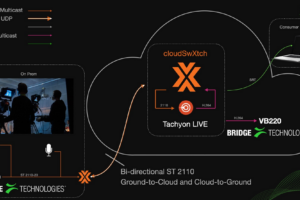By Karl Escritt, CEO of Like Digital & Partners
Saudi Arabia is evolving at a break-neck pace, driven by the Kingdom’s ambitious Vision 2030 roadmap, which aims to future-proof KSA via sustainable development, economic reform, and technological transformation. It’s an innovative framework that permeates every facet of Saudi Arabia, particularly the digital sector.
While the ultimate goals of Vision 2030 may be a few years away from realisation, the results are already beginning to take seed across the Kingdom. The UN’s International Telecommunication Union (ITC) recently ranked Saudi Arabia second among the Group of Twenty countries and fourth globally in terms of digital readiness, based on its success in building a sustainable regulatory framework, and its shift towards collaborative regulations to empower the digital economy. But how can local businesses ensure they keep apace in this fast-paced landscape?
A seismic shift in e-commerce
The past few years have seen a seismic shift in consumer habits in KSA and across the world. At the height of the pandemic, there was only one place to purchase luxury goods, food and everything in between, and that was online. Companies and industries responded in turn by improving their digital offering to better serve customers, and some even accelerated their digital transformation by months and years to capitalise on demand.
By the end of 2021, internet penetration in KSA had reached an incredible 98%, according to the Kingdom’s Communications and Information Technology Commission (CITC), with the purchase of goods and services topping internet usage. Interestingly, purchases from local retailers’ websites outperformed global sites, pointing to a desire for authentic, regionally specific content and highlighting the need for local businesses to have an engaging digital presence.
Rising to the challenge
With a digital sector now worth US$40 billion, the largest by far in the region, there’s no denying that KSA is one of the most exciting places on the planet to conduct business. For business owners, such rapid development isn’t without its challenges, however.
To remain competitive and relevant in today’s digital space, businesses must be agile, adaptable, and astute. They must be armed with the tools and technology to accelerate their digital transformation and react swiftly in the marketplace. Today’s consumer is more digitally savvy than ever, and they demand a seamless user experience. Saudi residents are also far more likely to make purchases via their mobile phones, with mobile usage at 77% compared to 22% for desktop and 1% for tablet, highlighting a strong imperative for mobile-first designs.
To future-proof their enterprises and align with the Kingdom’s Vision 2030, Saudi Arabian business owners need to embark on a journey of rapid digital transformation. A tailored approach is called for, whether that is an overhaul of the e-commerce experience to ensure a seamless mobile-first experience; replatforming from dated, inflexible CMS platforms to a more agile form of headless architecture; or enhancing UX and content marketing strategies to drive conversions and build brand engagement, now and beyond 2030.








